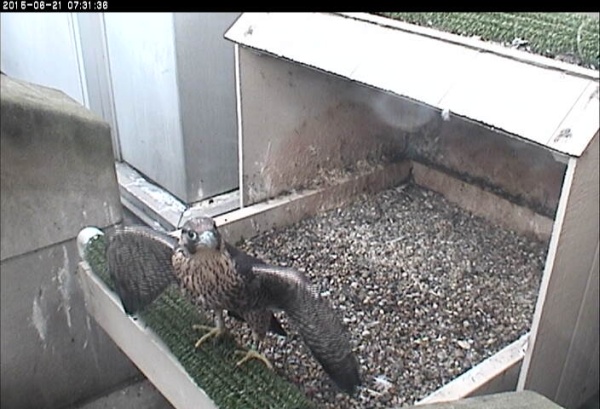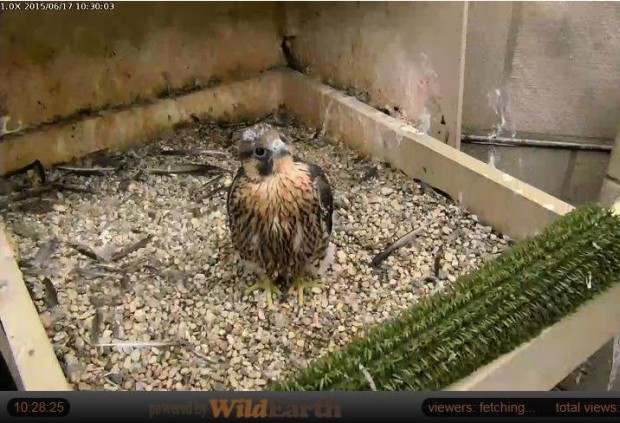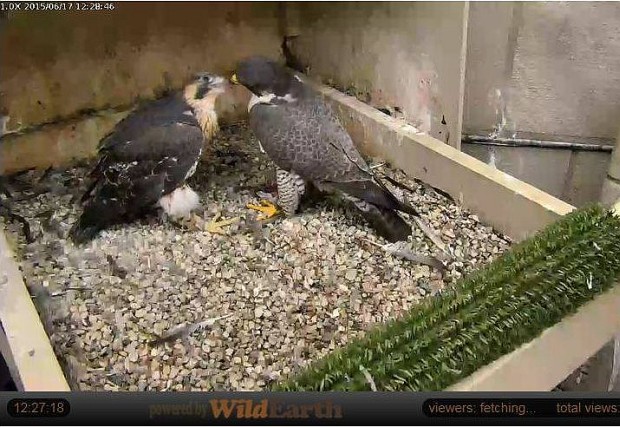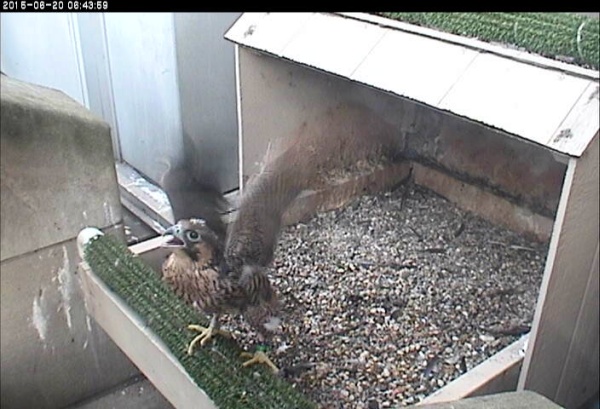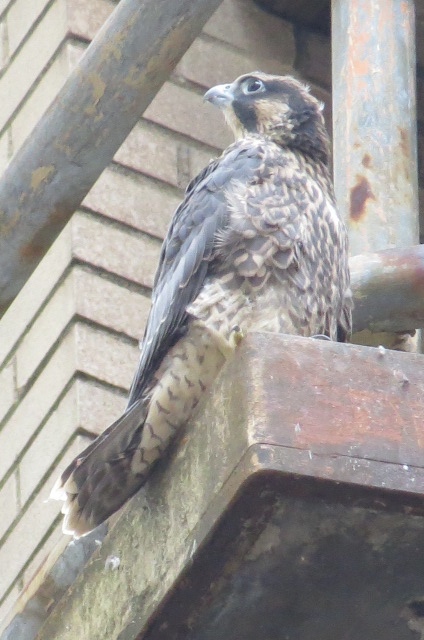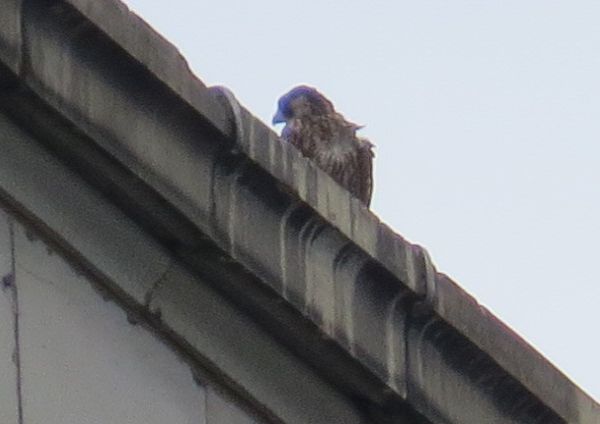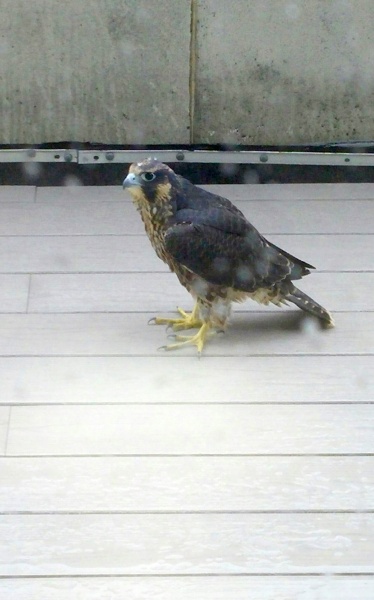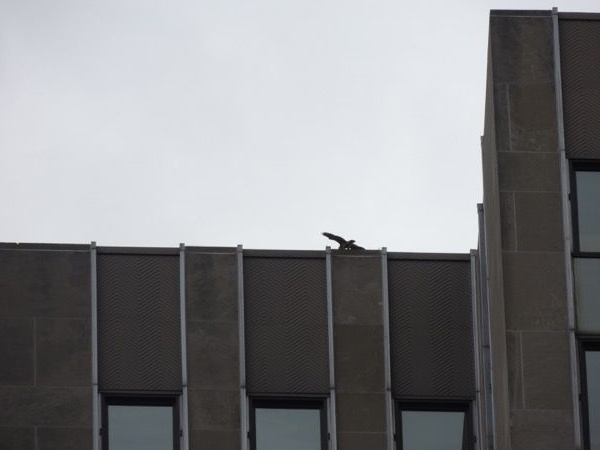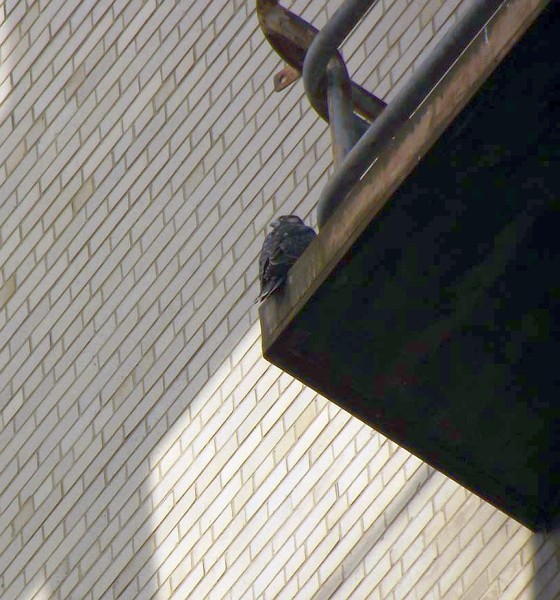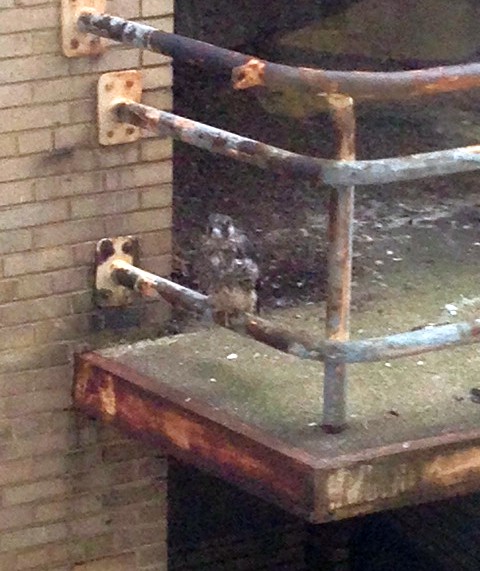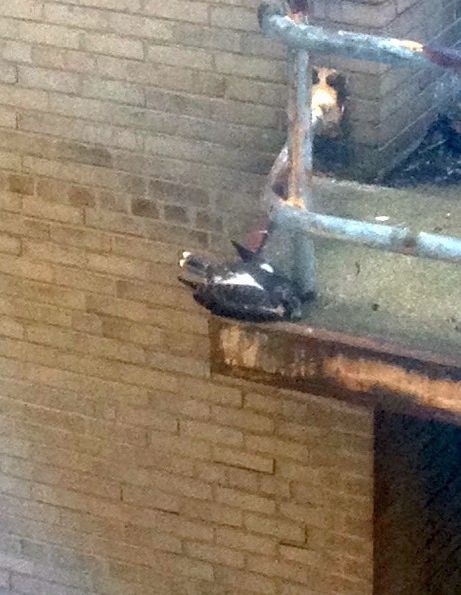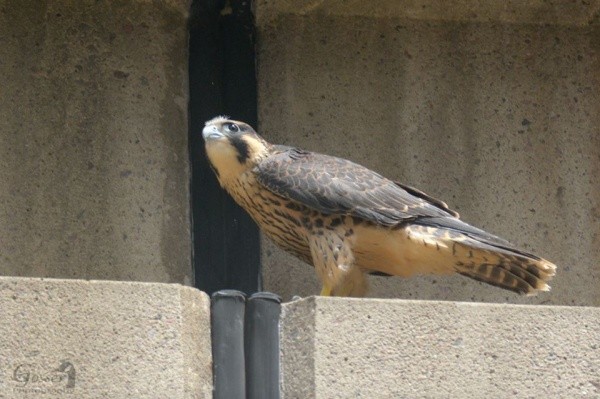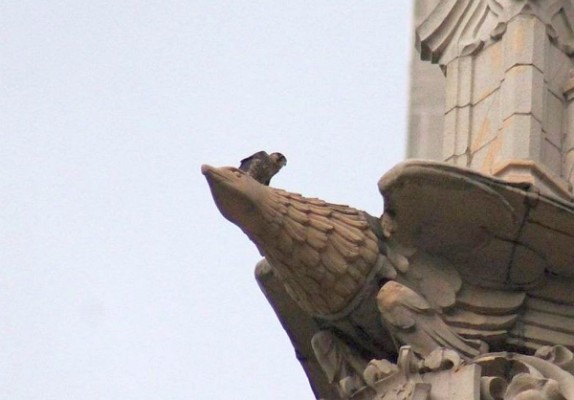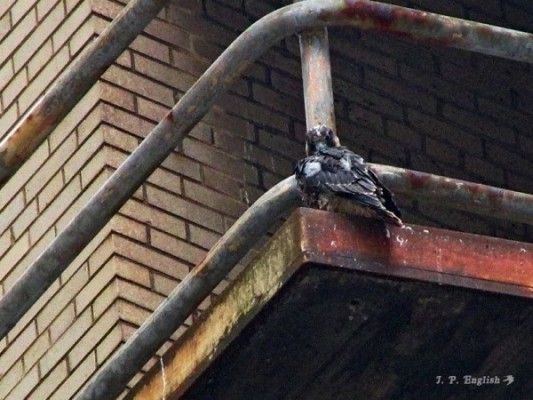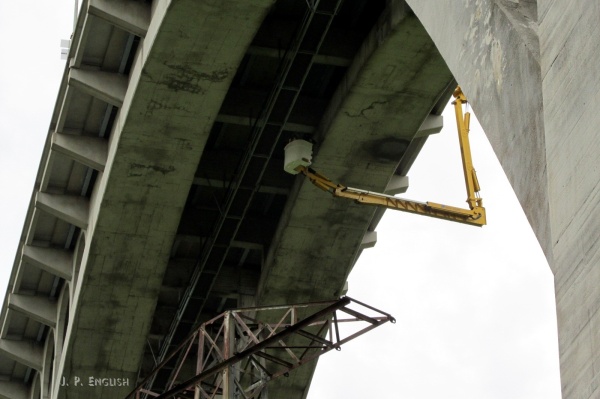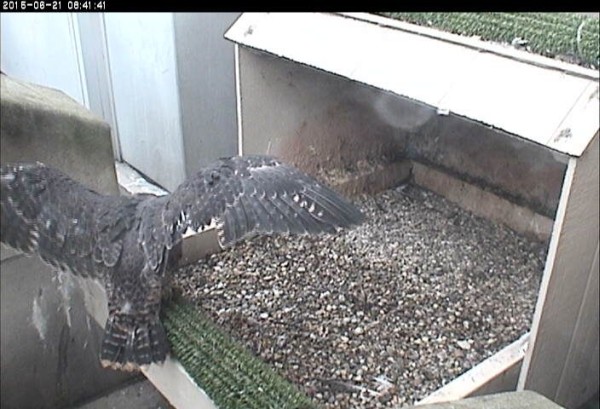
This afternoon the Pitt peregrine chick flew for the second time and landed, unscathed, on the patio at Hillman Library. Though Fledge Watchers were on the scene from noon to 2:30pm we missed him again, though we did see his parents.
Silver’s second flight was another straight down drop from the nest location, a vertical distance of 400 feet. In the 14 years I’ve monitored this nest, we have never had a fledgling land on the ground on his first flight, let alone his second.
This unusual performance was puzzling to the PA Game Commission so they took a very close look at the bird. Silver wasn’t injured by his two trips but his right wing has a feather-growth defect that explains why he can’t fly. Officer Puhala called me to say he had recovered the bird at Hillman Library. The defect is sending the fledgling to rehab.
I looked for motion detection snapshots of the feather defect and was surprised it was so obvious. It was there before he took his first flight. We just never noticed. (All of the photos are from early morning June 21 before Silver left the nest.)
As you can see, his right wing is missing most of its secondaries, one of his primaries is flipped, and his upper wing coverts are short or missing. Simply put, Silver’s wings are lopsided. Of course he goes straight to the ground.
In this condition he cannot learn to hunt and would not survive his first year in the wild. If it’s not a permanent defect — if he actually has the proper feather follicles — then he must go through a complete molt (a year from now) before he can begin to fly. After the molt he will have to be taught to hunt before he can be released. If his feather defect is permanent, he will become an education bird. In any case, he’ll be in rehab for quite a while.
Below are more photos from before he ever attempted to fly.
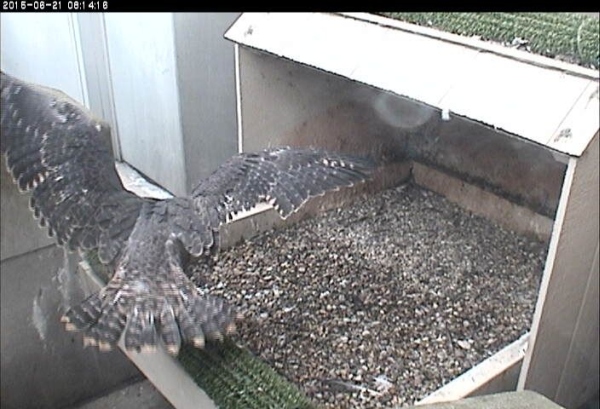
.
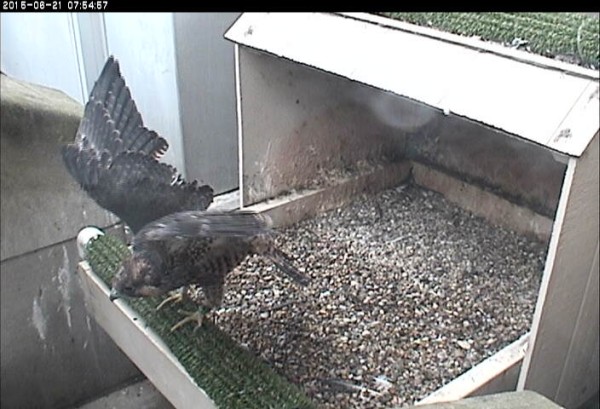
.
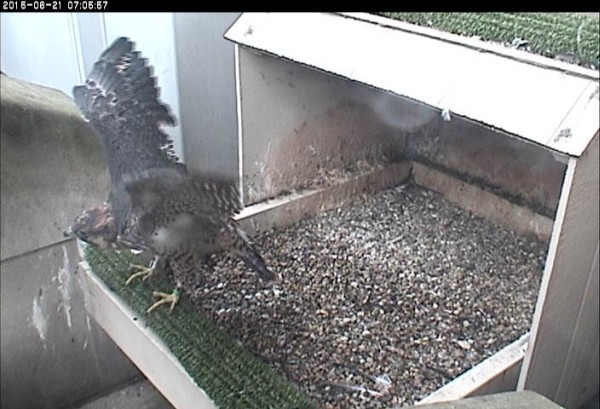
In late May we knew he was a special needs bird. Now he’ll get the special attention he needs.
p.s. At this time we do not know what caused the defect.
(photos from the National Aviary snapshot camera at the University of Pittsburgh)




